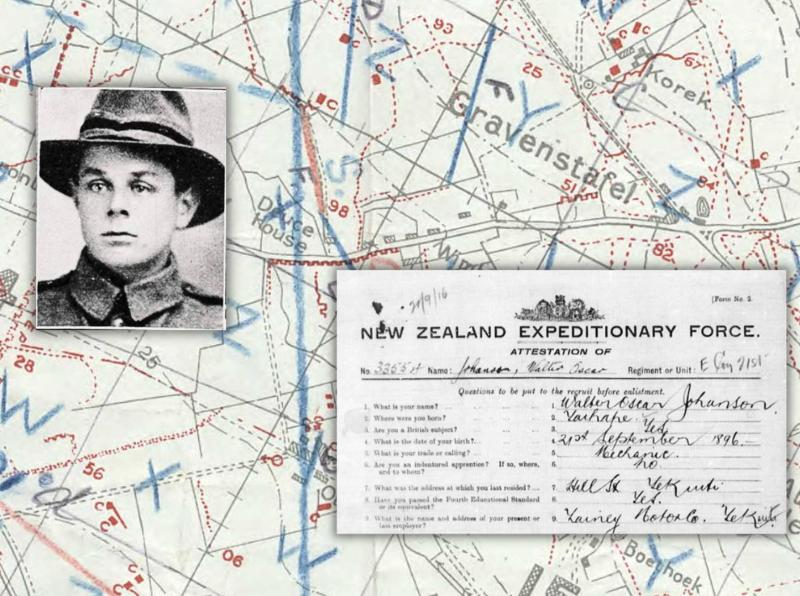Our ANZAC Walter prepares for the next offensive
In Part I, we met ANZAC Walter Oscar Johanson, who lied about his age to enlist in the New Zealand Expeditionary Force (NZEF) during World War I (WWI). We left Walter and his comrades before the big summer offensive of 1917. In Part II, we pick up the story again, re-joining Walter on the Western Front. Read on to discover Walter’s story and more hints and tips on researching your ancestor’s military service.
By the summer of 1917, the Allies were desperate to break the deadlock on the Western Front. Their plan was a major offensive known as the Third Battle of Ypres, or the Passchendaele Offensive, in the Flanders region of Belgium. Launched on 31 July 1917, the offensive aimed to secure the high ground around Ypres and break out of the salient (a bulge in the frontline) which they had occupied since 1914.
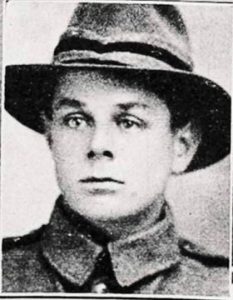
In and out of the line
Despite the setback of illness upon arriving in France, Walter was now ready to join his unit for frontline service. We can see from Walter’s service record that he joined the 1st Battalion Wellington Infantry Regiment on 4 August 1917 while the battalion was in billets in Nieppe, France, on the Belgian border. The history of the Wellington Regiment during WWI provides more information on what Walter’s battalion was doing during this period.
FWR Tip: Regimental histories are useful for learning about a regiment and its activities during the war and provide context for your ancestor’s military service. You may find some in our Historical Documents Library.
The battalion remained in Nieppe until 17 August, conducting training and supplying men for night working parties, carrying out repairs on trenches under the cover of darkness. On the 17th, the battalion moved into a section of trenches known as St. Yves Post Office, north-east of Ploegsteert, Belgium. They remained in the line until the 21st, improving the wire and carrying out patrols. On the 21st, they marched out of the frontlines to Romarin Camp. These may be common experiences for many ancestors who served in the trenches during WWI.
Out of the line and on the move again by 29 August, they had made their way to Selles in northern France, settling down in poor billets. During this time, Walter’s battalion was permitted a break to Ambleteuse on the French west coast for a day’s sea bathing. Sadly, this would be the last day of respite and enjoyment for Walter and many of his comrades.
Preparation for battle
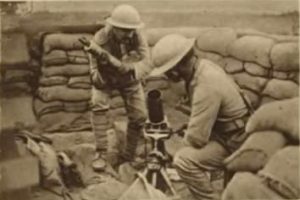
Training Walter and his comrades for the upcoming offensive was soon in full swing. However, on 7 September, Walter was faced with a new challenge: he was posted to a new unit, Number 1 Light Trench Mortar Battery (TMB). Having been trained as an infantryman, he would now need to learn how to operate new equipment before the upcoming offensive.
Trench mortar units formed an important part of an infantry division’s fighting capability. Light units, like the one Walter joined, were operated by the infantry. They used 3-inch Stokes mortar bombs, weighing about 4.5kg, fired at an angle from a metal tube fixed to a base plate with a bipod mount. The light units had good mobility and were used for defensive and offensive attacks from the relative safety of a trench. Notably, they provided much-needed firepower for suppressing enemy targets during an advance, as Walter was about to experience.
Passchendaele Offensive
The New Zealand Division was sent into action on 4 October during the Battle of Broodseinde, with the aim of taking the last significant obstacles leading up to Passchendaele Ridge: Gravenstafel Spur, one of two spurs running from Passchendaele Ridge. This would be Walter’s first taste of offensive action.
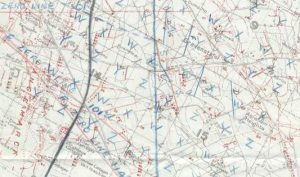
FWR Tip: War diaries are valuable sources for researching an ancestor’s military service and the day-to-day movements of a battalion or unit during the war. Many are in national archives, but British Army WWI war diaries are available on Forces War Records for the Western Front and Gallipoli. Read more on researching British WWI ancestors and using war diaries in our handy blog.
Walter and his comrades moved into position two nights before the battle commenced. They would support the advancing infantry, and during the attack, the New Zealanders swarmed the German forward positions. The conditions were exceptionally bad, and according to the book With the Trench Mortars in France, the TMBs had to carry their equipment and ammunition across boggy ground riddled with shell holes. Nevertheless, the attack was deemed a success, with the New Zealanders taking over 1,000 prisoners and extending the Allied forward line. The trench mortars were withdrawn once the objectives were taken, owing to the long transportation of ammunition over difficult terrain, heavy casualties and the lack of spare men in reserve to continue to supply ammunition to the guns. Despite the attack’s success, the New Zealanders sustained 1,700 casualties; 350 lost their lives, including Walter.
Matt provided further insight into Walter’s death, emphasising the importance of family stories when researching our ancestor’s military service:
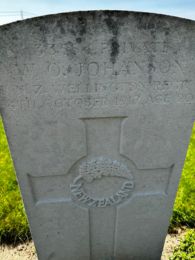
‘What we found from friends of his who visited my Grandma after the war was he had been wounded and while being stretchered off the battlefield he was sitting up and apparently a sniper or stray round caught him in the head killing him instantly.’
Walter now rests in Dochy Farm New British Cemetery, along with many other ANZACs, 5.5 miles north-east of Ypres, Belgium.
FWR Tip: If you’re researching an ancestor’s military service during WWI or WWII, and they sadly died, start with our Commonwealth War Graves Commission death registers. Entries provide basic military information about the person and, sometimes, their next of kin and address.
Studying Walter’s service record, we can see that his medals were subsequently issued to his mother in Palmerston North.
New Zealanders continue the fight
Buoyed by the gains of 4 October, British commanders sought to push on to Passchendaele Ridge. On 12 October, the New Zealand Division advanced across horrendous muddy conditions, straight into the enemy’s undamaged defences. 846 New Zealanders were killed out of 2,700 casualties (dead, wounded missing) in what is described as New Zealand’s ‘darkest day’. The II ANZAC Corps was relieved by the Canadians on 18 October, but New Zealand infantry remained in the line for another week when their participation in the offensive was finally over. The village of Passchendaele, which has become synonymous with the offensive, was captured on 10 November in the final phase of the battle, but it came at a significant cost.
Retracing Walter’s footsteps
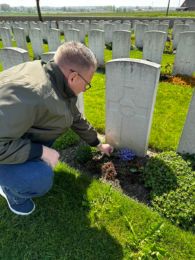
An act of kindness brought Matt and his family closer to Walter’s final resting place when Lisa, Matt’s sister, was contacted by a Belgian resident who lives near Dochy Farm Cemetery. She visited Walter’s grave and sent Lisa some photos, knowing that he was their ancestor.
Determined to pay his respects at his great-uncle’s gravesite, Matt left New Zealand and, like Walter, headed for the Western Front:
‘…despite the obviously large time scale between him and I, there is a connection that you genuinely feel when visiting a fallen family member…’
Matt continues:
‘…the trip was certainly a treasured memory and really an honour to go and see his gravesite.’
If Matt’s story has inspired you and you want to learn more about your ancestor’s military service, explore our WWI research blog for more hints and tips and how to get the best out of your research. Perhaps there is a military ancestor in your family tree waiting to be explored.
Cover image credit: © Archives New Zealand (service record), The National Archives (trench map), Matt W. (photo of Walter).
Sources
David William Love, A Call to Arms: The Organization and Administration of Canada’s Military in World War One (Winnipeg and Calgary: Bunker to Bunker Books, 1999).
Jonathan Spurrell, Laurie Holmes and Michael Green et. al., None Have Done Better: The lives of the Old Colcestrians who died in the First World War (Rothersthorpe, Northamptonshire: Paragon Publishing, 2018).
National Army Museum, Battle of Passchendaele, accessed April 2024.
New Zealand History, 1917: Arras, Messines and Passchendaele, accessed April 2024.
New Zealand History, Battles of Broodseinde and Passchendaele map, accessed April 2024.
Passchendaele Society, The Passchendaele Offensive, accessed April 2024.
The Long, Long Trail, The British Trench Mortar Batteries in the First World War, accessed April 2024.
W.E.L. Napier, With the Trench Mortars in France (Auckland, Auckland: Alpe Bros and Co., 1924).
W. H. Cunningham, C. A. L. Treadwell and J. S. Hanna, The Wellington Regiment (NZEF) 1914 – 1919 (Wellington, Wellington: Ferguson & Osborn, 1928).

